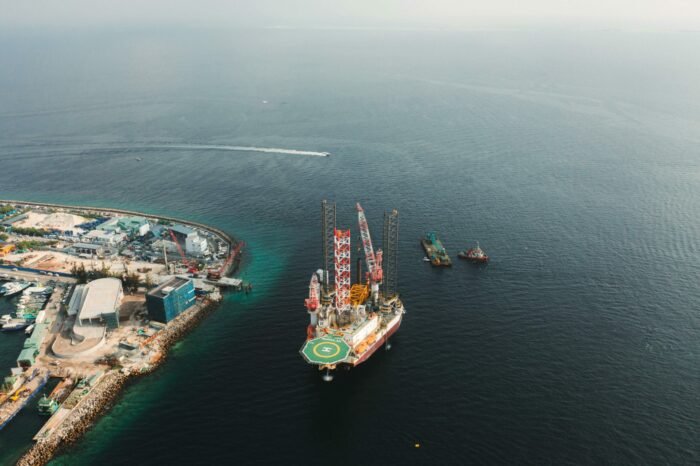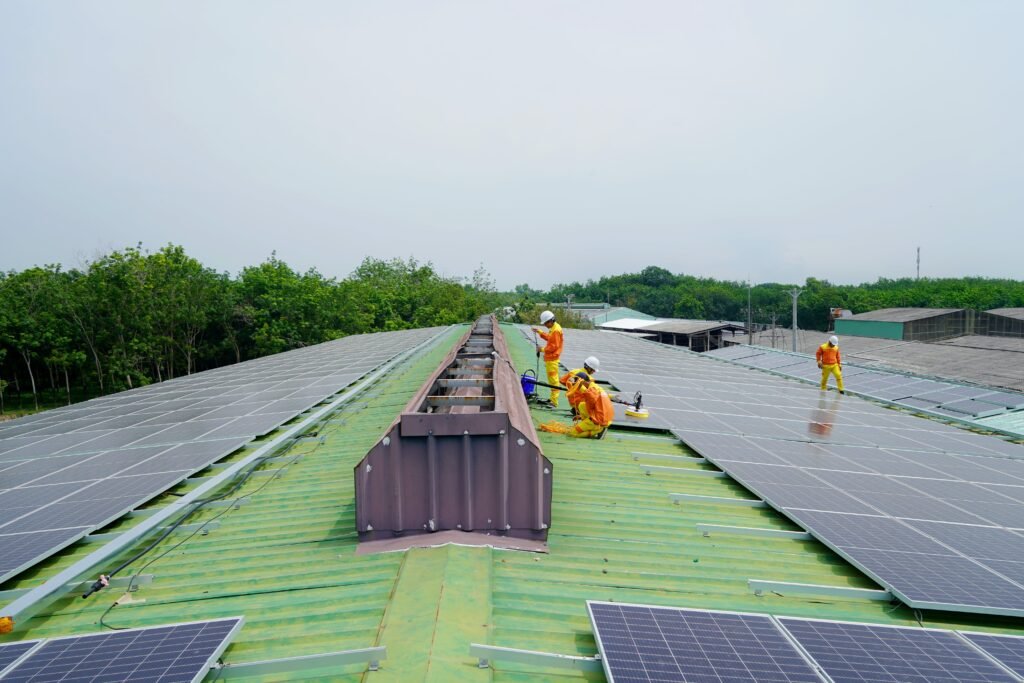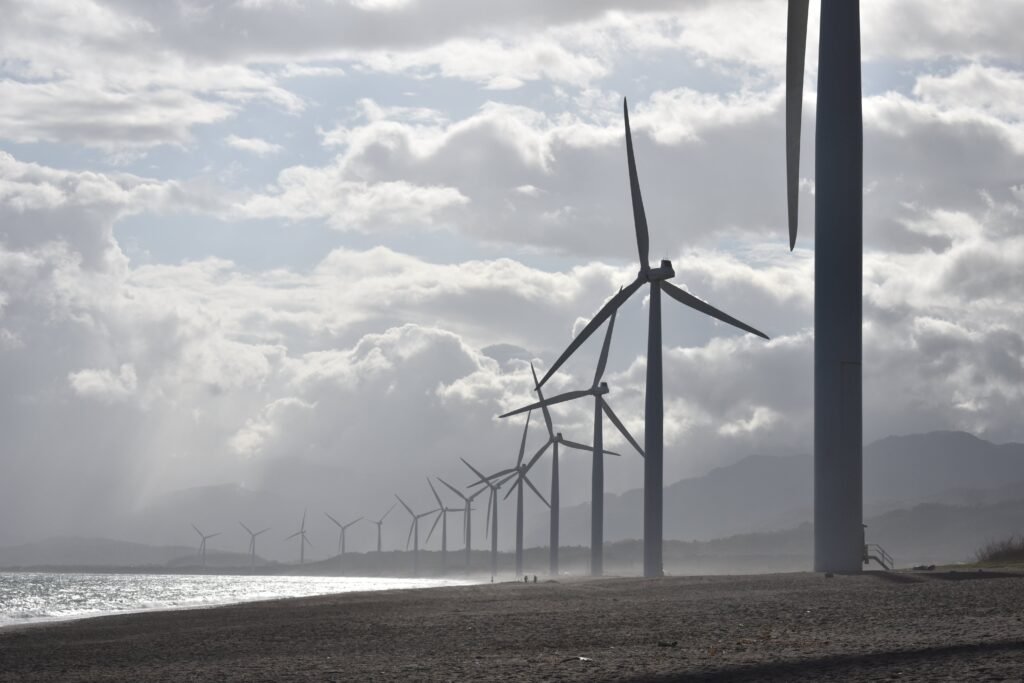Harnessing energy efficiency strategies is crucial for offshore oil rig operations. As these rigs operate in remote and challenging environments, optimizing energy consumption becomes a paramount concern. Not only does it reduce costs and enhance sustainability but also improves overall operational performance. In this blog post, we will delve into various strategies that can be implemented to maximize energy efficiency on offshore oil rigs. From advanced technology integration to renewable energy solutions, monitoring systems to behavioral changes, we will explore the diverse approaches available for minimizing energy waste and maximizing productivity. So let’s dive in and discover how these strategies can revolutionize offshore oil rig operations!
Statistics on Energy Efficiency Strategies for Offshore Oil Rig Operations
Here are some current and important statistics related to this topic:
- Offshore oil and gas platforms are energy-intensive systems, with each facility using from a few to several hundred MW of energy, depending on the petroleum properties.
- Different strategies can be applied to improve the energy performance of oil and gas facilities, which can be classified into two categories: energy efficiency measures and renewable energy sources.
- A study found that energy efficiency measures, such as optimizing the use of compressors, pumps, and heat exchangers, can reduce energy consumption by up to 30% on offshore oil and gas platforms.
- An energy management strategy designed for offshore oil rigs with offshore wind can help to reduce energy consumption and improve energy efficiency.
- Novel technologies, such as waste heat recovery systems and variable speed drives, can increase the energy efficiency of offshore oil and gas platforms.
- Top energy transformation strategies that operators and producers are currently implementing offshore include reducing emissions, improving energy efficiency, and investing in renewable energy sources.
The Importance of Energy Efficiency
Energy efficiency plays a pivotal role in the success and sustainability of offshore oil rig operations. It is not just about saving costs, but also about reducing environmental impact and ensuring operational optimization. By harnessing energy-efficient practices, offshore rigs can significantly minimize their carbon footprint while maximizing productivity:
- Offshore oil rig operations are highly energy-intensive, requiring massive amounts of power for drilling, pumping, and processing activities. Inefficient use of energy not only leads to wastage but also increases operating expenses. Implementing energy-efficient strategies helps reduce overall energy consumption without compromising on performance.
- Moreover, given the remote locations of these rigs, access to conventional sources of energy may be limited or expensive. Relying on alternative sources such as renewable energy can provide a more sustainable solution while reducing dependence on fossil fuels.
- Furthermore, enhancing energy efficiency promotes a culture of responsible resource management within the industry. By adopting efficient technologies and practices, offshore oil rig operators demonstrate their commitment to minimizing environmental impact and contributing towards global efforts for sustainability.
- In addition to cost savings and environmental benefits, optimizing energy usage enhances operational reliability by reducing downtime due to equipment failures or malfunctions caused by excessive heat generation or inefficient power distribution systems.
- Prioritizing energy efficiency on offshore oil rigs is essential for long-term viability and success in an increasingly environmentally conscious world.
By embracing innovative solutions and implementing best practices across all aspects of operations – from equipment selection to monitoring systems – companies can achieve significant improvements in both performance and sustainability.
Energy Efficiency Strategies for Offshore Oil Rig Operations
1. Energy Consumption Analysis
Understanding the energy consumption patterns on offshore oil rigs is crucial for implementing effective energy efficiency strategies. By conducting a thorough analysis, operators can identify areas of high energy usage and develop targeted solutions to reduce waste:
- One approach to analyzing energy consumption is through metering and monitoring systems. These systems track the amount of electricity, fuel, and other resources used by different equipment and processes on the rig. This data can then be analyzed to identify inefficiencies or anomalies that may indicate opportunities for improvement.
- In addition to metering, it’s important to consider factors such as weather conditions, production levels, and operational schedules when analyzing energy consumption. For example, certain activities may require more power during peak demand periods or in adverse weather conditions.
- Once the data has been collected and analyzed, operators can take steps to optimize their operations. This could involve implementing measures such as adjusting equipment settings, optimizing scheduling practices, or upgrading outdated machinery with more efficient alternatives.
- Regular monitoring of energy consumption is also essential for maintaining ongoing efficiency improvements. By continuously tracking usage trends and comparing them against benchmarks or targets, operators can ensure that any gains made are sustained over time.
By conducting an in-depth analysis of energy consumption patterns on offshore oil rigs, operators can uncover opportunities for reducing waste and improving overall efficiency. With this knowledge in hand, they can implement targeted strategies that not only save money but also contribute to a greener future for the industry.
2. Advanced Technology Integration
In the ever-evolving world of offshore oil rig operations, advanced technology integration plays a crucial role in optimizing energy efficiency. By harnessing the power of cutting-edge technologies, companies can reduce their environmental impact and improve overall operational performance:
- One area where advanced technology integration is making waves is in the field of automation. Through the use of sophisticated control systems and sensors, offshore rigs can monitor energy consumption in real-time and make adjustments to optimize efficiency. This not only helps to minimize waste but also ensures that equipment operates at peak performance levels.
- Another technological advancement that has revolutionized offshore operations is the Internet of Things (IoT). By connecting various devices and equipment through IoT networks, rig operators gain unprecedented visibility into their energy usage patterns. This data allows them to identify areas for improvement and implement targeted strategies to enhance efficiency.
- Furthermore, advancements in artificial intelligence (AI) have paved the way for predictive maintenance solutions on oil rigs. AI-powered algorithms analyze data from sensors installed on critical equipment, allowing operators to predict potential breakdowns before they occur. By addressing maintenance issues proactively, companies can avoid costly downtime while ensuring optimal energy usage.
- Additionally, incorporating renewable energy sources into offshore operations has become increasingly viable thanks to advancements in technology. The installation of solar panels or wind turbines on rig platforms provides an alternative source of clean power generation while reducing reliance on traditional fossil fuels.
By embracing advanced technology integration on offshore oil rigs, companies are able to unlock significant opportunities for improving energy efficiency. From automation and IoT networks to AI-driven predictive maintenance and renewable energy solutions – these innovations are reshaping the industry’s approach towards sustainability while optimizing operational performance.
3. Renewable Energy Solutions
In today’s world, finding sustainable energy sources is becoming increasingly important. Offshore oil rig operations are no exception to this trend. Incorporating renewable energy solutions can not only reduce environmental impact but also improve the overall efficiency of these operations:
- One viable option for offshore oil rigs is the integration of wind turbines. These turbines harness the power of the wind and convert it into electricity, providing a clean and renewable source of energy. By utilizing this technology, oil rigs can supplement their conventional power supply with green energy.
- Another renewable energy solution that holds promise for offshore oil rig operations is solar power. Installing solar panels on the rig’s surface allows for the generation of electricity from sunlight. With advancements in solar panel technology, even areas with less abundant sunlight can benefit from this sustainable option.
- Hydroelectricity is another potential solution for offshore oil rigs located near water bodies such as rivers or oceans. By harnessing the flow or tidal movements, hydroelectric generators can produce electricity without relying on fossil fuels.
- Furthermore, bioenergy offers an alternative to traditional fuel sources by converting organic waste materials into usable energy through processes like anaerobic digestion or biomass combustion. This method not only reduces waste but also provides a continuous source of renewable energy for offshore operations.
- By incorporating these renewable energy solutions into offshore oil rig operations, companies have an opportunity to decrease their carbon footprint while reducing reliance on non-renewable resources. The benefits extend beyond environmental considerations; they also contribute to long-term cost savings and improved operational efficiency.
Embracing renewable energy solutions represents a significant step towards creating a more sustainable future for both our planet and industries like offshore oil rig operations.
4. Energy-Efficient Equipment
Energy-efficient equipment plays a crucial role in improving the overall energy efficiency of offshore oil rig operations. By using advanced technology and innovative designs, these equipment help to reduce energy consumption while maintaining productivity:
- One example of energy-efficient equipment is high-efficiency motors. These motors are designed to convert electrical energy into mechanical power with minimal losses. They operate at higher efficiencies compared to standard motors, resulting in significant energy savings.
- Another important piece of equipment is LED lighting. LED lights consume much less energy than traditional incandescent or fluorescent lights, making them an ideal choice for offshore rigs where lighting requirements are constant.
- Pumps and compressors are also essential components that can benefit from energy-efficient design features. Variable speed drives can be used to control the speed of pumps and compressors based on demand, which helps optimize their performance and reduce unnecessary energy consumption.
- Additionally, smart HVAC (heating, ventilation, and air conditioning) systems can contribute to considerable energy savings on offshore oil rigs. These systems use sensors and controls to adjust temperature settings based on occupancy levels and environmental conditions, ensuring efficient operation without compromising comfort.
- Investing in modernized machinery with improved insulation and reduced friction can lead to substantial gains in terms of reducing heat loss during operation. This not only lowers the amount of wasted heat but also decreases the load on cooling systems by minimizing heat generation.
- Incorporating energy-efficient equipment into offshore oil rig operations is a key strategy for optimizing overall efficiency while reducing environmental impact.
By utilizing advanced technologies like high-efficiency motors, LED lighting, variable speed drives for pumps/compressors, smart HVAC systems, as well as improved insulation techniques; companies can achieve significant cost-savings through reduced electricity consumption.
5. Monitoring and Control Systems
In the quest for energy efficiency on offshore oil rigs, implementing monitoring and control systems is a crucial step. These systems allow operators to closely monitor energy consumption in real-time, identify areas of inefficiency, and make necessary adjustments to optimize performance:
- With advanced technology integration, these systems can provide comprehensive data on various aspects of rig operations, including power usage, temperature levels, equipment performance, and more. This valuable information enables operators to pinpoint specific areas that require optimization or upgrades.
- By having access to real-time data through monitoring and control systems, operators can make informed decisions about energy usage. They can identify patterns or anomalies in consumption patterns and take proactive measures to reduce waste or improve efficiency.
- Furthermore, these systems enable remote monitoring capabilities which are particularly beneficial for offshore operations. Operators can remotely monitor energy usage from onshore locations using secure networks. This not only saves time but also reduces the need for personnel traveling back and forth between the rig and shore.
- Additionally, integrating control systems allows for automated processes that further enhance energy efficiency. For example,
– Adjusting lighting schedules based on occupancy
– Optimizing HVAC settings based on weather conditions
– Implementing smart controls for machinery operation - By automating such processes with precision timing and accurate sensor readings , significant reductions in overall energy consumption can be achieved.
Overall, monitoring and control systems play a vital role in optimizing energy efficiency offshore oil rigs by providing real-time data insights , enabling remote management options , and empowering automation capabilities . With their implementation ,operators have better visibility into their operations leading them towards making informed decisions regarding reducing waste, and enhancing overall operational performance.
6. Behavioral Changes and Training
When it comes to energy efficiency on offshore oil rigs, focusing solely on technological solutions may not be enough:
- One often overlooked aspect is the role of behavioral changes and training in reducing energy consumption. By promoting a culture of energy awareness among rig operators and personnel, significant savings can be achieved. This starts with education and training programs that highlight the importance of energy conservation and provide practical tips for minimizing waste.
- Simple actions like turning off lights when not in use, properly maintaining equipment to prevent leaks or inefficiencies, and optimizing scheduling to minimize idle time can all contribute to substantial energy savings over time.
- In addition, fostering a sense of ownership among employees by involving them in decision-making processes regarding energy usage can lead to increased engagement and commitment towards adopting more sustainable practices.
- Regular monitoring and feedback mechanisms can also play a crucial role in reinforcing positive behaviors while addressing any areas where improvement is needed. By providing real-time data on energy consumption, employees become more aware of their impact and are motivated to make better choices.
- It’s important for companies operating offshore oil rigs to recognize that behavioral changes require ongoing effort and support. Continued training sessions, reminders through signage or email communication, as well as recognition programs for outstanding contributions towards improving energy efficiency can help sustain the momentum for change.
- Incorporating behavioral changes through comprehensive training programs drives a cultural shift towards sustainability within offshore oil rig operations.
By empowering employees with knowledge about their individual roles in conserving energy resources, companies have the potential to achieve long-term cost savings while reducing environmental impact.
7. Waste Heat Recovery
Waste Heat Recovery plays a crucial role in enhancing energy efficiency on offshore oil rigs. These massive structures generate enormous amounts of heat during their operations, and instead of letting this valuable resource go to waste, it can be harnessed and utilized. Waste heat recovery systems capture the excess heat produced by various processes on the rig, such as exhaust gases from engines or hot water streams from equipment cooling.
By implementing waste heat recovery technology, offshore oil rigs can significantly reduce their overall energy consumption and carbon footprint. The captured heat can be used for a multitude of purposes, including generating electricity or heating water for showers and other applications. This not only reduces dependency on external power sources but also saves costs associated with fuel consumption.
One popular method of waste heat recovery is through the use of Organic Rankine Cycle (ORC) systems. These systems utilize organic fluids with low boiling points that vaporize when exposed to high temperatures. The generated vapor drives a turbine which generates electricity.
Another option is using waste heat to produce steam for additional power generation or process heating. By incorporating waste heat recovery into existing equipment and infrastructure, operators can maximize energy efficiency without compromising production output.
However, it’s important to note that implementing waste heat recovery technologies requires careful planning and integration within the rig’s existing operations. Factors like space availability, temperature differentials, and system designs need to be considered for optimal performance.
Waste Heat Recovery offers immense potential for improving energy efficiency in offshore oil rig operations. By capturing and utilizing wasted thermal energy that would otherwise be lost into the environment, these installations can minimize their environmental impact while simultaneously reducing operational costs.
8. Energy Audits and Benchmarking
Energy Audits and Benchmarking are vital tools in assessing and improving the energy efficiency of offshore oil rig operations. An energy audit involves a comprehensive evaluation of the rig’s energy consumption patterns, identifying areas where improvements can be made. This analysis helps identify inefficiencies, waste, and opportunities for optimization.
Benchmarking takes this assessment one step further by comparing the rig’s performance against industry standards or similar rigs to determine how it stacks up in terms of energy efficiency. By setting benchmarks, operators can track their progress over time and strive for continuous improvement.
During an energy audit, various aspects are evaluated such as lighting systems, HVAC equipment, electrical motors, and other power-consuming devices. Additionally, data on fuel usage is collected to assess overall operational efficiency. These audits help highlight potential areas for improvement that may have gone unnoticed otherwise.
Benchmarking provides a valuable reference point for evaluating the effectiveness of implemented measures and enables operators to gauge their performance compared to peers in the industry. It allows them to identify best practices employed elsewhere or even within their own organization that can be replicated for better outcomes.
By conducting regular energy audits and benchmarking exercises, offshore oil rig operators not only gain insights into their current energy consumption but also uncover opportunities to reduce costs through enhanced efficiency measures. These assessments enable them to make informed decisions about adopting new technologies or implementing process changes that yield significant savings while reducing environmental impact.
Efficiency gains resulting from these efforts can include optimizing equipment settings, upgrading outdated machinery with more efficient alternatives, using advanced control systems to regulate power usage based on demand fluctuations – all leading towards reduced carbon emissions and lower operating expenses.
Energy Audits and Benchmarking form crucial components of any successful strategy aimed at improving offshore oil rig operations’ overall energy efficiency levels. Through detailed assessments of current practices combined with comparisons against established benchmarks – operators gain valuable insights necessary for effective decision-making when it comes to future investments in technology upgrades or process modifications that drive sustainable energy consumption patterns.
9. Cost-Benefit Analysis
When it comes to implementing energy efficiency strategies on offshore oil rigs, conducting a cost-benefit analysis is crucial. This analysis allows companies to evaluate the potential costs and benefits associated with adopting new technologies or making operational changes.
By carefully assessing the financial implications of energy efficiency measures, rig operators can make informed decisions about which initiatives are most viable and have the greatest impact. This analysis takes into account factors such as upfront investment costs, ongoing maintenance expenses, expected energy savings, and potential revenue gains:
- One important aspect of cost-benefit analysis is considering the payback period for each proposed initiative. How long will it take for the initial investment to be recouped through energy savings? Understanding this timeframe helps prioritize projects based on their economic feasibility.
- Additionally, a comprehensive cost-benefit analysis should also consider any external incentives or subsidies that may be available for certain energy efficiency measures. These can significantly reduce upfront costs and improve the overall return on investment.
- It’s worth noting that while some initiatives may have higher upfront costs, they might yield substantial long-term benefits by reducing operational expenses over time. Therefore, an in-depth assessment of both short-term and long-term financial impacts is essential when evaluating various energy efficiency strategies.
- Conducting a thorough cost-benefit analysis enables offshore oil rig operators to make well-informed decisions regarding which energy-efficient solutions will provide optimal returns on investment while reducing environmental impact.
By weighing both monetary considerations and sustainability goals together, these analyses help shape effective strategies for enhancing offshore operations’ overall efficiency.
Conclusion
Implementing energy efficiency strategies in offshore oil rig operations is crucial for both environmental and financial reasons. By analyzing energy consumption, integrating advanced technology, utilizing renewable energy solutions, investing in energy-efficient equipment, implementing monitoring and control systems, promoting behavioral changes and training, exploring waste heat recovery options, conducting regular energy audits and benchmarking performance, and evaluating cost-benefit analysis; oil companies can significantly reduce their carbon footprint while optimizing operational costs.
Offshore oil rig operations are known to be demanding in terms of energy requirements. However, by adopting these energy efficiency strategies, companies can make significant progress towards sustainable practices. The benefits of such initiatives go beyond reducing greenhouse gas emissions; they also contribute to long-term cost savings through improved operational efficiency.
It is essential for all stakeholders involved in offshore oil rig operations to prioritize sustainability by embracing innovative technologies and best practices that will help minimize the industry’s impact on the environment. By working together towards a greener future with increased reliance on cleaner sources of power generation and efficient use of resources onboard offshore installations; we can ensure a more sustainable future for our planet while maintaining productivity in the industry.
Let us take up the challenge to implement these effective energy efficiency strategies today so that tomorrow’s generations can benefit from a healthier planet as well as thriving offshore oil rig operations!












![Mastering Personality Style Adaptability Tactics [5 Benefits] 13 Mastering Personality Style Adaptability Tactics](https://zoets.b-cdn.net/wp-content/uploads/2024/02/2ojpb-e1709053841881.jpg)